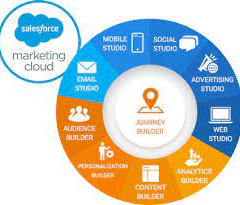Salesforce Sunsets Audience Studio: Implications for the DMP Landscape
Salesforce recently announced the discontinuation of Audience Studio, their Data Management Platform (DMP) acquired five years ago as Krux. This move raises questions about the future of DMPs in the evolving digital landscape. Implications for the DMP Landscape.
Current State of DMPs
Understanding the context and future of DMPs requires examining their current functionality and limitations:
- Reliance on Third-Party Cookies: The impending deprecation of third-party cookies casts uncertainty over the future of DMPs.
- Benefits and Limitations: While DMPs offer advantages in audience management, they face challenges with speed, data quality, data loss, and interoperability.
- Digital Environment Focus: DMPs are optimized for all-digital environments, which limits their effectiveness in true omnichannel strategies.
- Role of Customer Data Platforms (CDPs): CDPs are emerging to fill the gaps left by DMPs.
Inherent DMP Limitations
Salesforce’s decision to sunset their DMP highlights several critical limitations inherent to the technology:
- Customer 360 Promise: Unlike CDPs, DMPs have struggled to deliver a comprehensive 360-degree view of customers, largely relying on third-party cookies.
- Ethical and Practical Issues: DMPs collect data through cookies without explicit customer awareness, leading to ethical concerns and reliability issues as third-party cookies are phased out.
- Latency and Interoperability: DMPs experience delays in onboarding offline data, and their customer 360 view is often restricted to the digital world, hindering true omnichannel integration.
- Data Loss: Significant data loss occurs in the DMP customer 360 supply chain, limiting the ability to target subsegments effectively.
DMP Strengths
Despite these limitations, DMPs still offer value in certain areas:
- Programmatic Media Strategy: DMPs can power programmatic media strategies, managing audience and frequency to reduce wastage.
- Data Enrichment: DMPs can enhance first-party data with second- and third-party data, although usage restrictions apply.
Uncertain Future of DMPs
The future of DMPs is uncertain as they primarily serve media optimization reliant on third-party cookies. While evolution in the post-cookie world is possible, it requires significant changes in technology and adtech provider support.
Advantages of CDPs
CDPs address many of the shortcomings of DMPs and offer several advantages:
- Omnichannel Engagement: CDPs enable real-time customer engagement across both online and offline channels, creating a seamless experience.
- Future-Proofing: CDPs build customer 360 views without relying on third-party cookies, managing data use and ensuring privacy compliance.
- Customer-Centric Measurement: CDPs focus on behavior and outcomes, providing precise insights for marketing activation and other business use cases.
- Interoperability: CDPs ensure data consistency and accessibility across teams and platforms, supporting a unified customer data approach.
Challenges and Future Developments
The quest for a comprehensive view of the customer journey remains challenging due to data silos within major platforms like Google, Facebook, and Amazon. However, emerging technologies like Google’s Federated Learning of Cohorts (FLoC) offer potential solutions for privacy-preserving data sharing.
Strategies for Marketers
Marketers need to focus on building first-party data sets and quantifying their value. This involves:
- Investing in First-Party Data: Allocating budgets to grow opted-in customer data.
- Measuring ROI: Analyzing the incremental value of new customer data to optimize marketing strategies.
Transitioning from DMP to CDP
For brands transitioning from DMPs to CDPs, selecting the right CDP is crucial. Key features to look for include:
- Identity Solutions: A trusted enterprise source of truth that integrates known and anonymous data.
- Audience Insights and Predictive Analytics: Tools for creating and managing audiences and omnichannel journeys.
- Interoperability: Compatibility with cookie-less ad-tech ecosystems and direct sync with major platforms.
- Scalability: Ability to handle large data volumes and support various use cases.
- Dedicated Workflows: Accessible and user-friendly workflows for different teams.
- Independence and Funding: Assurance of long-term viability and independence from walled ecosystems.
Conclusion
The discontinuation of Salesforce’s Audience Studio reflects broader trends and challenges within the DMP category. As the digital landscape evolves, CDPs are emerging as a more effective and future-proof solution for managing and leveraging customer data. Brands must adapt by investing in robust CDP solutions that offer comprehensive, customer-centric data management and engagement capabilities.













